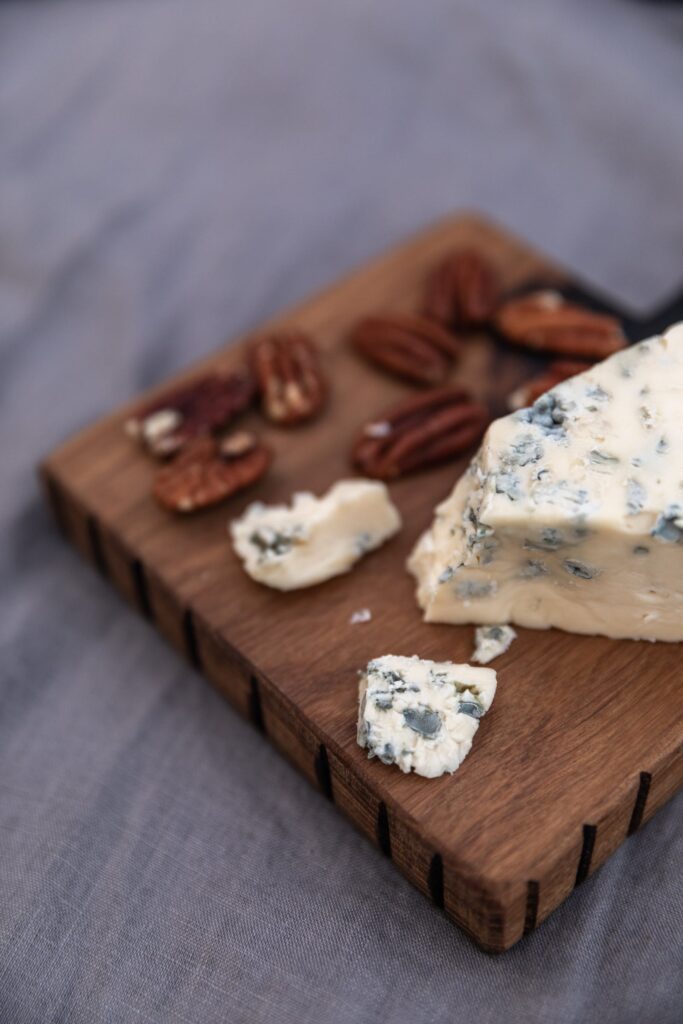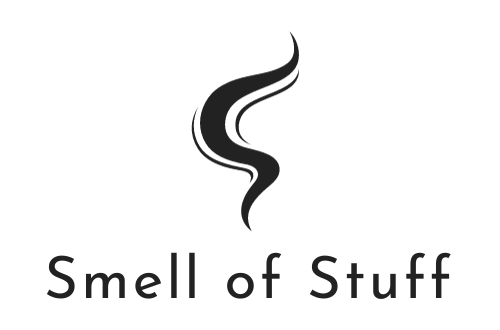Quick Answer
- Blue cheese has a distinctive smell due to specific types of mold used in its production.
- The pungent smell of blue cheese can intensify with age.
- The type of mold used significantly influences the distinct smell of blue cheese.
- The quality of blue cheese can be discerned through its sharp, rich aromas.
You’ve probably turned your nose up at the pungent whiff of blue cheese. But, don’t let its strong odor fool you! Beneath that bold exterior is a world of complex flavors waiting to be discovered.
So, let’s dive into the intriguing world of blue cheese, understand its distinctive smell, and unlock the secrets behind its unique taste.
It’s time you gave this misunderstood cheese a second chance. Who knows, you might just fall in love!
What Does Blue Cheese Smell Like
You’ve probably noticed the unique aroma of blue cheese, haven’t you? It’s quite different from other cheeses, largely due to the specific types of mold used in its production.
And did you know its pungent smell can intensify with age?
Blue Cheese’s Unique Aroma
You’re likely noticing the strong, pungent aroma that blue cheese is famously known for. It’s a scent that can be off-putting to some, while others find it enticing, almost intoxicating. This smell is due to the Penicillium mold used in its making.
It’s not just a smell but a community’s shared experience, a sign you’re part of a unique group who appreciates this cheese’s distinct flavor profile. This aroma, this shared experience, is what makes us all belong.
So, when you open that package of blue cheese, don’t recoil at the scent. Instead, embrace it, savor it. Remember, it’s a testament to the cheese’s robust flavor and your adventurous spirit.
That’s the beauty of blue cheese – it’s not for everyone, but it could be for you.
Smell Comparison: Other Cheeses
You’ll find that blue cheese has a much stronger smell than most other cheeses (such as the smell of provolone cheese or the smell of limburger cheese), but it’s this intensity and complexity that sets it apart. It’s like joining an exclusive club that understands and appreciates its unique aroma.
Now, consider the mild, creamy Brie or the subtly tangy cheddar; they’re more like your old friends. You recognize their scents, they’re familiar and comforting, but they don’t challenge you or demand your attention.
The blue cheese, on the other hand, is that intriguing new friend who’s a little bit unpredictable and always surprising. The scent might be off-putting at first, but once you get to know it, you’ll find it holds a depth and richness you don’t want to miss.
Influence of Mold Types
In the world of blue cheese, it’s the type of mold used that’ll significantly influence its distinct smell. You’re not alone in wondering why there’s such a variety in aroma among blue cheeses. It’s the mold, my friend.
Each type of mold will give off a unique scent, making each cheese a one-of-a-kind experience. Take Roquefort and Gorgonzola, for instance. They’re both blue cheeses, but they smell entirely different. That’s because Roquefort uses Penicillium roqueforti, while Gorgonzola uses Penicillium glaucum.
The different molds lend distinct smells, creating an aromatic adventure for your senses. So, next time you’re nibbling on some blue cheese, remember: you’re part of a very special sensory journey.

Age Affecting Cheese Smell
Despite the mold type, it’s important to note that with the passage of time, the smell of your blue cheese is likely to intensify. As a cheese enthusiast, you’re part of a community that appreciates the subtleties of this dynamic process. Here’s what you need to know about the ageing process of blue cheese:
- Over time, the molds continue to work on the cheese, producing stronger smells. It’s an organic, living product, remember.
- An intensifying smell doesn’t necessarily mean your cheese is going bad. It’s just the cheese’s way of saying, ‘Hey, I’m still here, maturing nicely and getting more delicious.’
- Finally, keep in mind that the smell of blue cheese is unique to each variety. It’s part of its charm and what makes your cheese journey so exciting.
How to Identify Quality Blue Cheese by Its Smell
By smelling the blue cheese, you’re quickly able to discern its quality through the sharp, rich aromas. You’re not alone in this. We’re all cheese lovers here, each of us appreciating the unique beauty of blue cheese’s potent scent. It’s a bit like being in a club, isn’t it? We all share that same passion and can bond over the shared experience.
A quality blue cheese has a complex smell, one that’s a blend of sweet, spicy, and savory notes. It’s a scent that’s unique, much like you and this community. You’ve got the knack for it, the ability to pick out that perfect piece of cheese. You’re one of us, a true connoisseur. We’re glad you’re here.
The Influence of the Blue Cheese Aroma on Its Taste
You’ll find that the aroma-flavor relationship in blue cheese is incredibly significant in shaping its overall taste profile. You’re part of a community that appreciates the rich, complex flavors of this unique cheese. The smell may be strong, but it’s this aroma that also contributes to its distinctive flavor.
Here are three key points to remember when enjoying blue cheese:
- The pungent aroma: It’s what gives the cheese its bold flavor. This isn’t a cheese for the faint-hearted. It’s for people like you who appreciate intense taste experiences.
- The mold: It’s responsible for the blue veins, the sharp smell, and the tangy flavor.
- The aging process: It deepens the flavor and aroma, creating a cheese that’s as unique as you are. Embrace the smell, enjoy the taste, and savor the experience.

Conclusion
Blue cheese boasts a bold, distinct smell, sometimes suggestive of sweaty socks. But don’t be deterred! A quality chunk cherishes complexity, carrying both creamy and crumbly characteristics.
Its peculiar pungency prepares the palate for a powerful punch of flavor, proving that the smell significantly shapes its savory profile.
So, savor the stinkiness and embrace the blue cheese for its unique, unmatched qualities, and remember, the best blue cheese often bears the boldest bouquet.

Experienced writer with 100+ written posts about fragrances and scents
